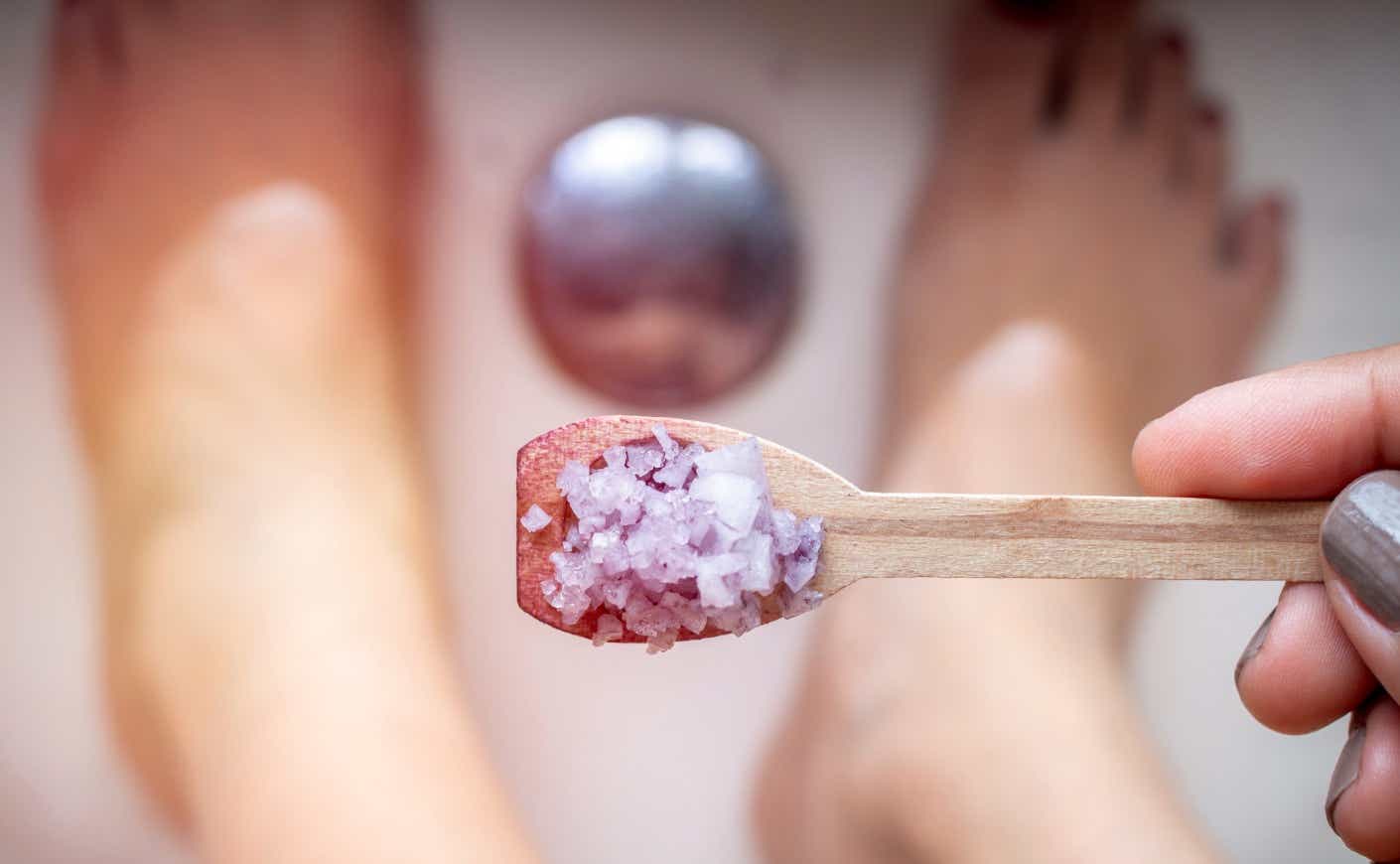We took a look at the many uses of the decades-old home remedy.
If you’ve ever had a particularly grueling workout at the gym or inexplicably pulled a muscle after a fitful night’s sleep, you might’ve turned to Epsom salts to relieve your aches and pains.
Having been around for hundreds of years, Epsom salt has a variety of uses — both in and out of the bathtub. For instance, it can be used to exfoliate dead skin and even soften ingrown nails. Not to throw salt in your wounds, but the thing is…there’s actually no concrete evidence of these supposed health benefits.
So we took a deeper look at what the science says about this popular health and wellness tool.
What is Epsom salt?
Epsom salt is also known as magnesium sulfate, and it’s one of many naturally occurring mineral salts. But it shouldn’t be confused with table salt — though the two look similar, Epsom salt is much more bitter and not supposed to be ingested. So don’t go sprinkling it on your fries.
The mineral salt was first discovered 400 years ago in the village of Epsom in Surrey, England. When news of its benefits spread, people far and wide started coming to soak in a bitter saline spring that was thought to have medicinal properties.
Nowadays, you don’t have to travel that far for a salty soak. You can find it at most drugstores or grocery stores, usually around aspirin and laxatives. The best part? You can get a giant bag for just a few dollars.
What does Epsom salt do?
Epsom salt is still primarily used as a bath soak because it’s believed to help with muscle pain, stress, and other problems. But there’s not much research to back up these claims — only theories. For example, it’s been reported that if you soak in an Epsom salt bath, it’s absorbed by your body through your skin. Unfortunately, this hasn’t been proven, and what studies have been done are skeptical, at best. But we do know that the body doesn’t make magnesium on its own — you have to get it from other sources, such as food or supplements.
What are the benefits of an Epsom salt bath?
Despite the lack of scientific data, there’s no denying the health benefits of magnesium, a key ingredient in Epsom salt.
While there’s no direct evidence that Epsom salt baths can help soothe exercise-induced muscle soreness, there is research that magnesium may help prevent or limit muscle aches after a workout. The same is thought to be true for minor sprains and bruises: “It is a good non-medicinal tool but only as part of a larger treatment plan for an injury,” says Natasha Desai, MD, who’s the co-director of the Center for Women’s Sports Medicine at New York University’s Langone Health.
Beyond muscle recovery and injuries, the magnesium found in Epsom salt may also play a role in helping relieve certain chronic conditions. Many people with fibromyalgia, a condition marked by widespread pain and fatigue, and arthritis use Epsom salt to soothe pain and reduce stress. “A lot of patients choose the non-medicinal route and this is one of the tools in addition to other things,” says Dr. Desai. “So it could be used in complement with the ibuprofen and other interventions or it could be used as a replacement based upon preference and the amount of pain.”
In addition to physical aches and pains, Epsom salt baths even have serious pros for relieving psoriasis or other conditions that cause dry skin. “These exfoliating salts can help soothe and thin out the excess skin,” says Teo Soleymani, MD, a dermatologist based in Pasadena, California.
That’s not all: Dr. Soleymani adds that magnesium and sulfate found in Epsom salt baths also have anti-inflammatory and soothing effects. Give it a try the next time you’ve got a sunburn, an inflammatory rash, or even body acne.
How much Epsom salt should you use for a bath?
First, the water should be very warm — not hot, but comfortable to the touch. The Epsom Salt Council recommends pouring 1 to 2 cups of Epsom salt into your bathtub while it fills with water to help it dissolve. But you don’t want to just use any Epsom salt — the Cleveland Clinic recommends buying one that’s 100 percent magnesium sulfate.
There’s no official recommendation for how long you soak but Dr. Desai recommends soaking in an Epsom salt bath for at least 15 to 20 minutes to reap the potential benefits. “There’s no significant downside, except for taking the time to sit in the bath,” she tells us.
Are there any risks?
Epsom salt is sometimes taken as a magnesium supplement or as a laxative. This, in turn, can cause severe diarrhea, bloating, or upset stomach. Dr. Desai doesn’t recommend using it this way without consulting your doctor because it could also cause dehydration if taken at the wrong levels.
“Magnesium is a pretty significant laxative,” she says. “It’s actually what’s used in colonoscopy preparation. You can also get the concentration very off if you don’t dilute it correctly, so I definitely would not recommend creating your own mixture of salt and water and drinking it.”
You might also want to take some precautions when taking Epsom salt baths. “If you have broken, raw, or denuded skin, such as a fresh blister; a sunburn that’s peeled; or any sort of infection on the skin, avoid Epsom salt baths,” says Dr. Soleymani. You wouldn’t want to throw salt in a wound, would you?









